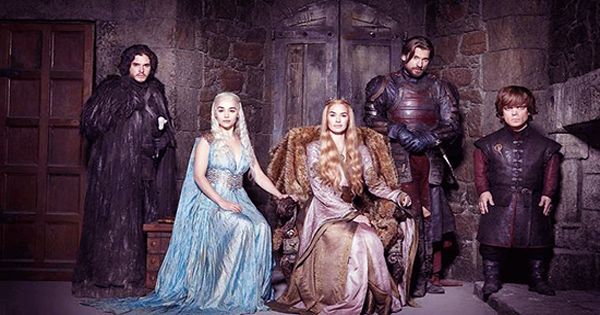We are talking about the Game of Thrones final. Eight years of creation – if you include books – will finally give fans a chance to know who will take the Iron Throne.
Things really started to get ready for the biggest event of the year. It’s not a super bowl and it has absolutely nothing to do with Brexit. (That particular horror has been delayed until Halloween.) Not even the release of the first image of a black hole – it was on Wednesday.
The algorithm connects the web to GoT data and compresses a few numbers to calculate the survival chances of each character. Still, not waiting for the final episode to air, participants at a computer science seminar at the Technical University of Munich (TUM) created an artificially intelligent application using their technical skills to guess which character would come forward.
In fact, more than half a dozen characters from the show have so far stung the dust – and with events reaching a peak in season 8, fans can expect bloodshed. As even the most casual viewer will know, the death rate in the GoT universe is infamously high.
Suspicious In 2016, students on the same course accurately predicted the resurgence of Jon Snow before the start of the Jon season, so there might be something in it. So, who will survive and who will die as predicted by the app. Most of the characters are likely to have a sticky ending before the final credit roll of Game of Thrones. Includes Bronn (sorry), whose survival rate is a pitiful 6 percentage, Sansa (27 percent), and his brother Bran aka Three-Eyed Raven (42 percent). Meanwhile, the most likely to survive (according to the app) are Daenerys (99 percent), Tyrion (97 percent) and Jaime Lannister (96 percent). John Snow, who has already died once, also has some disadvantages of surviving at 88 percent.
Women have a higher survival rate than men (89 percent versus 78 percent) and are less likely to die than aristocratic farmers (82 percent survival versus 75 percent), According to the algorithm. Other factors that may increase your chances of not dying include marriage (reducing the chances of death by marriage decreased by an average of 56%) and a major character (reducing the chances of dying by, reducing the chances of dying by 16%).
The results further indicate that it is better to be a Lannister (average chance of death reduced by 45%). Then a stark (“death probability” reduced by 38%) or a Targaria (42% lower “probability of death”).
Last December, a team of researchers at Macquarie University tried to figure out who would survive at the conclusion of the series – discovering that one of the seven main characters died within the first hour of being introduced. This is not the first time science has been used to predict the complex and often unexpected (much of Red Wedding?), Life-and-death story of the Game of Thrones.
Some of these survival controversies seem to be somewhat optimistic given the showrunner’s penchant for death and destruction, especially if the stories of cast bluffing read in the final script go nowhere, admittedly.
















